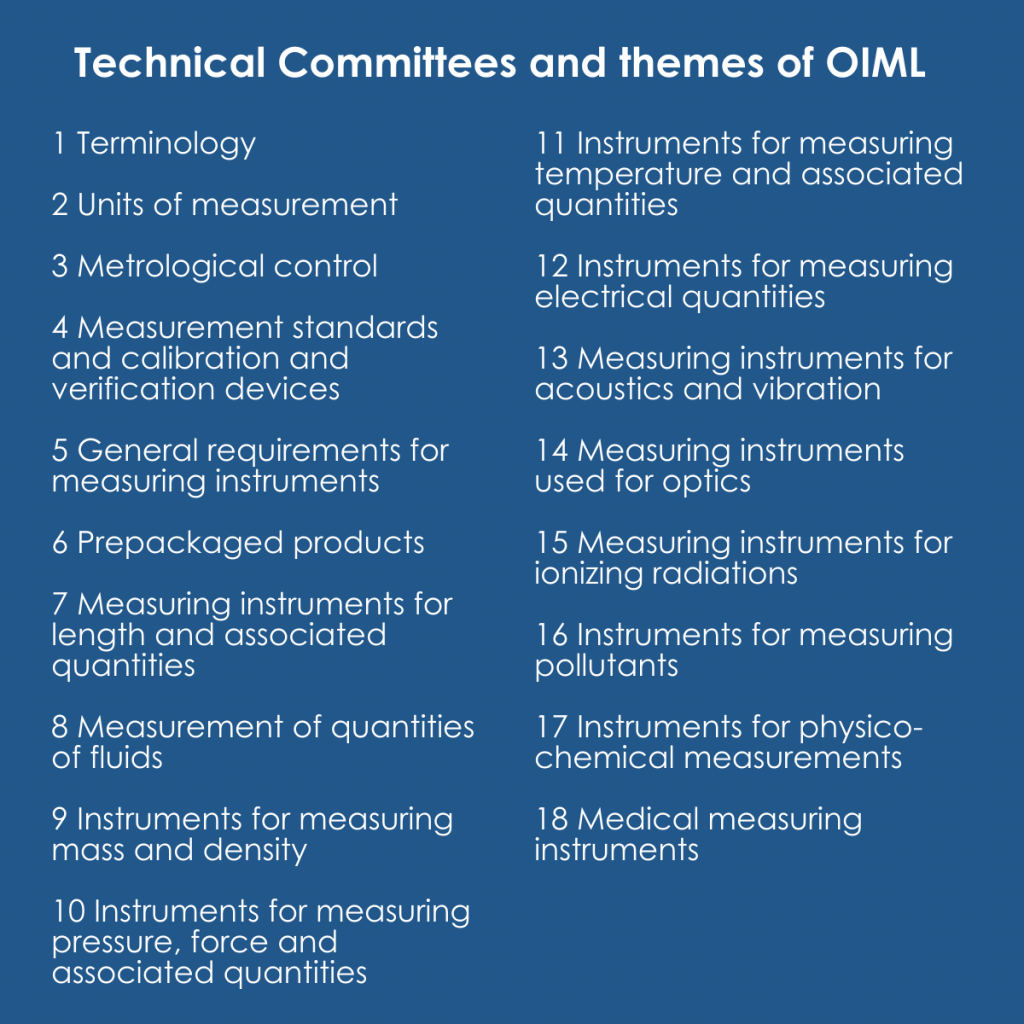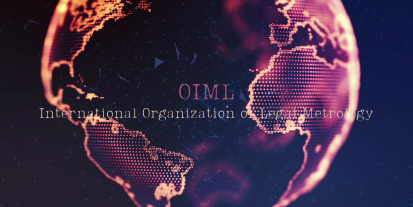An organisation that sets technical standards for 86% of the world’s population, covers 95% of the global economy – and runs with only 2 Million Euro annual budget. Even if this sounds almost too good to be true, the OIML (International Organisation of Legal Metrology) is real and affects most of us. How did this global influencer come to be, what are its tasks and how does it work? Deputy Head of Legal Metrology Department of Swedac and a long-standing expert participating in OIML’s work Renée Hansson is giving us a tour of OIML in her view as the Swedish representative in OIML.
This is the second article in the series of articles, discussing legal metrology organisations, experts and legislation in global, European and Nordic context from a viewpoint of a company such as Ontec.
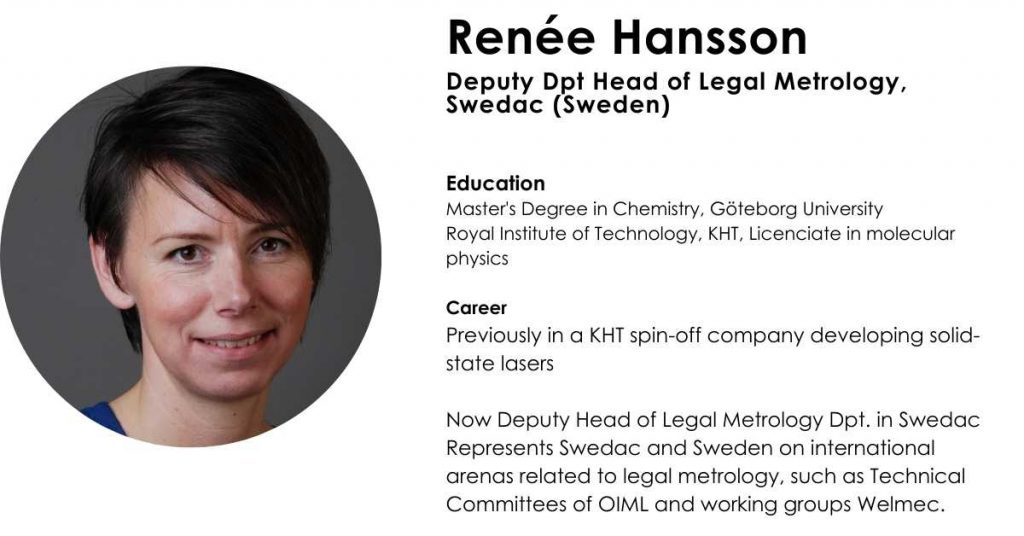
Origin Story
In the 1950s it became evident there was a dire need for harmonising global measuring and how measuring was done. The old ways of doing things were creating barriers to international trade and more cooperation was called for. Hence, sovereign states came together to resolve the issue and signed an inter-governmental treaty in 1955 in Paris – and voilá – OIML Organisation Internationale de Métrologie Légale (International Organisation of Legal Metrology) was born. Until this day, the administrative body of the organisation, the OIML secretariat known as BIML, is located in Paris. The first language of the organisation is French. All the members are sovereign states, not organisations.
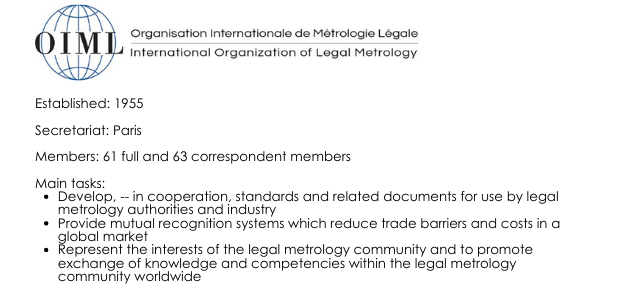
Organisation with Mission
If every country or continent would have its own measurement systems, international trade and even building projects would become much more expensive and risky. To prevent this, the mission of OIML is ”to enable economies to put in place effective legal metrology infrastructures that are mutually compatible and internationally recognized, for all areas for which governments take responsibility”.
Renée Hansson, who has been representing Sweden for many years in OIML’s Technical Committees and coordinating Swedish participation, adds: “OIML’s task is to promote the global harmonization of the legal metrology requirements and procedures that affect international trade. Another important work it has, is to provide certification system, OIML-CS, so that certification of measuring devices in one country is compatible and accepted in another, making sure that the trade in the measuring devices and in products that rely on them is trustworthy.”
Muscle behind the mission statement
OIML has proved its significance for key players of the global economy. Almost all trade is affected by the guidelines of OIML. Today, OIML has 61 full member countries with a right to vote and 63 correspondent members. Correspondent members can speak in session without the right to vote, as well as contribute and participate in the work of OIML.
How does the magic happen?
To achieve OIML’s mission, a lot of technical grinding takes place behind the scenes. “OIML carries out its work in projects that have very real output”, says Hansson.
Technical Committees – factories of legal metrology work
“The OIML’s technical work is divided into 18 Technical Committees known as TCs”, explains Hansson. “Each Committee has a theme it works with. Usually, TCs have Subcommittees. These Committees then have their own projects within Project Groups. The work is led by Conveners of the Project Groups”, she continues.
Hansson has a very simple explanation as to how OIML has been able to gain such results with a very small annual budget: “First of all, only those countries who want to participate in a certain Technical Committee or Project Group do so, depending on their interest and resources. This means everyone is very committed and eager to work with the issue to resolve it. Second, the OIML does not pay the legal metrology experts to participate in any of the OIML work – they are employed or appointed by their own governments, authorities or institutes. As in other standard-setting organisations, a lot of the work is done per correspondence saving travel costs.” This means OIML has been able to maintain a very cost-effective structure. The scale of the work being done is impressive – currently, OIML reports it has 18 Technical Committees and 58 Subcommittees.
Voice from the field
The manufacturers of measuring instruments deal with different realities than governments and regulating authorities. To ensure that the latest technological advances and future developments would not be ignored in the work of the OIML, industry associations participate in the technical work to give their input to the matter at hand. “Individual companies do not take a direct part in the OIML work, as it is an intergovernmental organisation”, points out Hansson. “Technical experts from the industry can participate, but since the member states are responsible for the actual decision making, this is possible only if a member has appointed them to represent the member in the technical work.”
Publications
“Probably the most tangible and visible part of OIML’s work for outsiders are the publications that are made by the technical committees. OIML publications give very detailed, technical requirements on how, for example, measuring instruments should work. Essentially, companies and authorities treat OIML documents as regulative standards”. Hansson adds: “The documents are available for free online on OIML’s web page for anyone to read and the technical committees update them when the need arises. As the development of technology gets more fast-paced, we face the same challenge as any standard-setting organisation do, to stay up-to-date.”
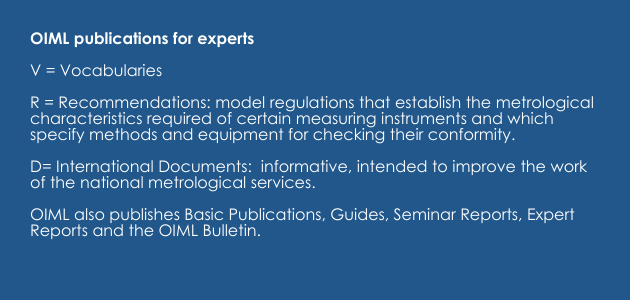
Team play
When asked about possible overlaps between OIML, other legal metrology organisations, standardisation organisations or other organisations relevant to legal metrology, Hansson has a clear answer: “In order to minimise the impact of possible overlap and also to ensure that the work of the OIML and other organisations can intermesh with each other, the organisations cooperate as liaisons or within treaties, so-called Memoranda of Understanding. In the coordination with other related organisations, a conscientious effort is made by all parties already in the planning phase of a project to avoid overlapping – and indeed any conflicting – requirements between different legal metrology organisations. In my view, another practical and perhaps an informal reason how overlapping is avoided, is that it is a small community. Often the very same experts are participating in different legal metrology organisations or working groups representing their country.”
Technical Committee 8 – measurement of quantities of fluids
A particularly interesting Technical Committee for a company such as Ontec is the 8th Technical Committee of OIML. Its publications influence directly the way things are done on the floor level of businesses.
One of such normative documents of great importance is OIML standard R-117, as it specifies technical requirements related to dynamic measuring systems for liquids other than water. It is one of the documents used to prove MID compliance of measurement systems. Renée Hansson’s was participating as coordinator of the input from Sweden in the preparation of R-117’s most recent 2019 edition, published in spring 2020.
The project was done within Subcommittee 3 of Technical Committee 8. “In my view, the final phases of the revision was carried out relatively fast“, says Hansson, “compared to some other recommendations. This was very good since the recommendation is widely used and is important in its role in the EU-regulation. Technology develops fast and we need to keep up. The technical changes were not drastic in nature but it needed updating. I hope this edition will last for some time.”
Next Chapter
In the following article, we will dive in European legal metrology together with Chairperson Gregor Dudle of WELMEC.
